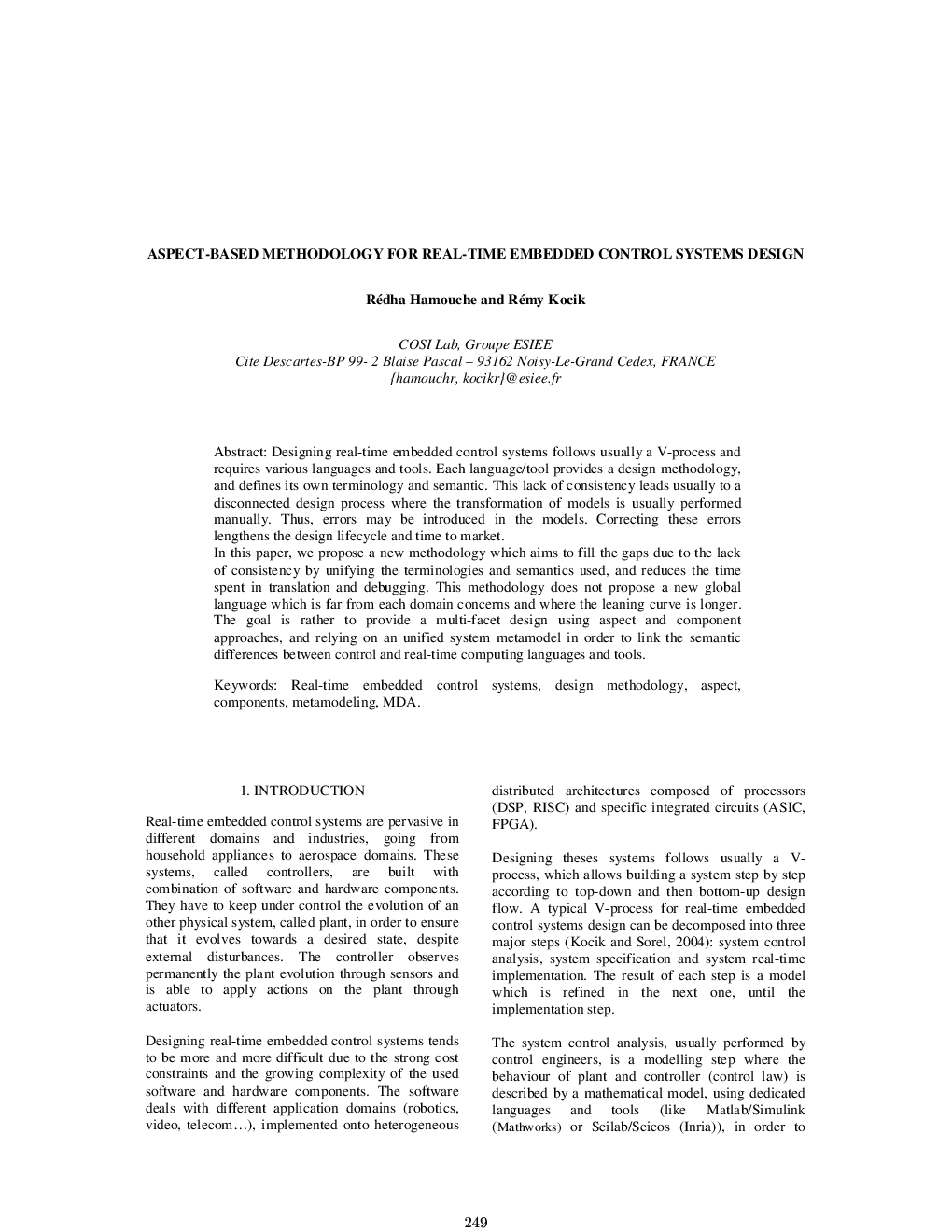| Article ID | Journal | Published Year | Pages | File Type |
|---|---|---|---|---|
| 722520 | IFAC Proceedings Volumes | 2007 | 6 Pages |
Designing real-time embedded control systems follows usually a V-process and requires various languages and tools. Each language/tool provides a design methodology, and defines its own terminology and semantic. This lack of consistency leads usually to a disconnected design process where the transformation of models is usually performed manually. Thus, errors may be introduced in the models. Correcting these errors lengthens the design lifecycle and time to market.In this paper, we propose a new methodology which aims to fill the gaps due to the lack of consistency by unifying the terminologies and semantics used, and reduces the time spent in translation and debugging. This methodology does not propose a new global language which is far from each domain concerns and where the leaning curve is longer. The goal is rather to provide a multi-facet design using aspect and component approaches, and relying on an unified system metamodel in order to link the semantic differences between control and real-time computing languages and tools.
